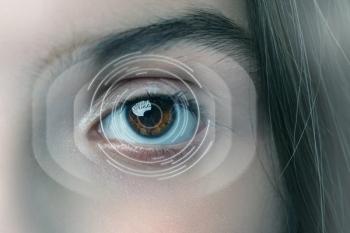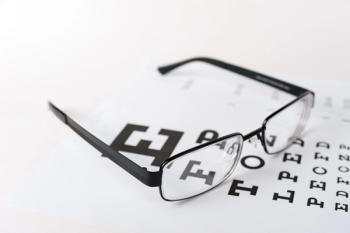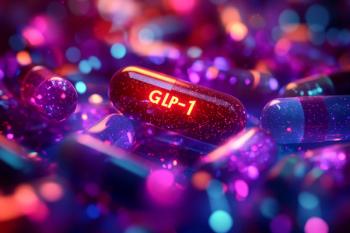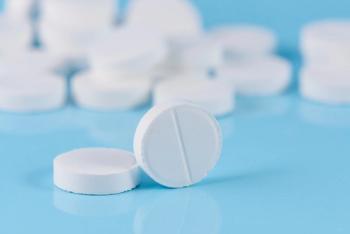
Dry Eye Improvement from Single TearCare Treatment Sustained Through 12 Months
According to the company, clinical outcomes for 78 dry eye patients treated at a single center, the Cleveland Eye Clinic, showcased the duration of efficacy of a single, first-time treatment of MGD using the TearCare System.
Sight Sciences Inc. today reported independent data addressing a frequent question from eyecare practitioners and patients regarding the treatment of meibomian gland disease (MGD) using the TearCare System: How long does a single treatment last?
According to the company, clinical outcomes for 78 dry eye patients (156 eyes) treated at a single center, the Cleveland Eye Clinic, showcased the duration of efficacy of a single, first-time treatment of MGD using the TearCare System.
Moreover, the news release noted that patients throughout the study exhibited improved dry eye signs and symptoms for more than 12 months, and in some cases up to 18 months, post treatment. The study was a retrospective, investigator-initiated trial (IIT) reviewing clinical outcomes for patients who had been treated with the TearCare system at least 12 months prior to data collection.
Further, it was noted in the news release that data showed that patients experienced a 44% decrease in dry eye symptoms from baseline to week 8, suggesting a fast onset of action from TearCare. This symptom reduction was maintained through month 12, further suggesting sustained long-term improvements associated with the use of the TearCare System. In some patients, these therapeutic benefits were maintained through 18 months.
For this study, all patient data were collected from medical records retrospectively with no prospective intervention. Patients’ symptoms were assessed at a single time point pre-treatment and at four time points post-treatment (8-12 weeks, 6 months, 12 months, and 18 months). Patients treated with therapies other than TearCare within the 12-month window, including ophthalmic prescription medications, were excluded. In total, data from 78 patients (156 eyes) who had been treated with the TearCare system and who returned for post-treatment follow up were included in the analysis.
Results of the trial showed most subjects experienced at least 12 months of gland function improvement and decreased symptoms. Standard Patient Evaluation of Eye Dryness (SPEED) score data decreased approximately 6.2 points, from 14.1 ± 6.5 to 7.9 ± 5.7, at eight weeks after treatment and was maintained up to 12 months post-treatment, indicating a positive treatment outcome. In addition, the average meibomian gland expression (MGE) score increased 4 points post-treatment from baseline of 4.9 ± 2.6 in the right eye and 4.8 ± 2.4 in the left eye to 9.0 ± 2.7 (P < 0.001) in the right eye and 9.0 ± 2.9 (P< 0.001) in the left eye (measured at 8 weeks post-treatment) and remained at least 3 points higher from baseline over the course of a year with a month 12 score of 7.8 ± 1.7 (P <0.001) in the right eye and 7.8 ± 1.4 (P < 0.001) in the left eye, again suggesting positive treatment outcomes in the signs of dry eye.
“Sight Sciences is committed to redefining the treatment paradigm for dry eye, a disease that until now has primarily been treated by prescription eye drops and artificial tears,” said Paul Badawi, CEO of Sight Sciences. “Considering only approximately 5% of dry eye patients currently receive interventional MGD procedures such as TearCare for the treatment of their dry eye,1 we believe these clinical data demonstrate the durability of treatment effect with TearCare and will support greater adoption of the procedure.
Badawi pointed out that interventional procedures for dry eye not only address the often mismatched mechanism of action of commonly prescribed Rx that typically target aqueous deficiency when most dry eye patients are suffering from accelerated tear evaporation due to MGD2 but they also help address patient compliance issues and the high monthly costs of daily prescription medications.
“Since the use of the TearCare System helps address the root underlying cause of obstructive MGD and evaporative dry eye, and since our growing body of clinical data suggest that such use confers durable efficacy advantages for many patients, we believe it will transform how dry eye is treated in the future,” he concluded.
The company noted in the news release that its objective is that these long-term efficacy findings, along with the ongoing prospective SAHARA RCT (NCT04795752) directly comparing the TearCare system with Restasis in the first ever large-scale device versus drug RCT, will provide payors with evidence in support of insurance coverage for TearCare along with a provider reimbursement pathway.
References
- Market Scope 2021: Ocular Surface Disease Survey
- Lemp MA, Crews LA, Bron AJ, et al. Distribution of aqueous-deficient and evaporative dry eye in a clinic-based patient cohort: a retrospective study. Cornea. 2012;31(5):472-478. doi:10.1097/ICO.0b013e318225415a
Newsletter
Pharmacy practice is always changing. Stay ahead of the curve with the Drug Topics newsletter and get the latest drug information, industry trends, and patient care tips.

















































































































